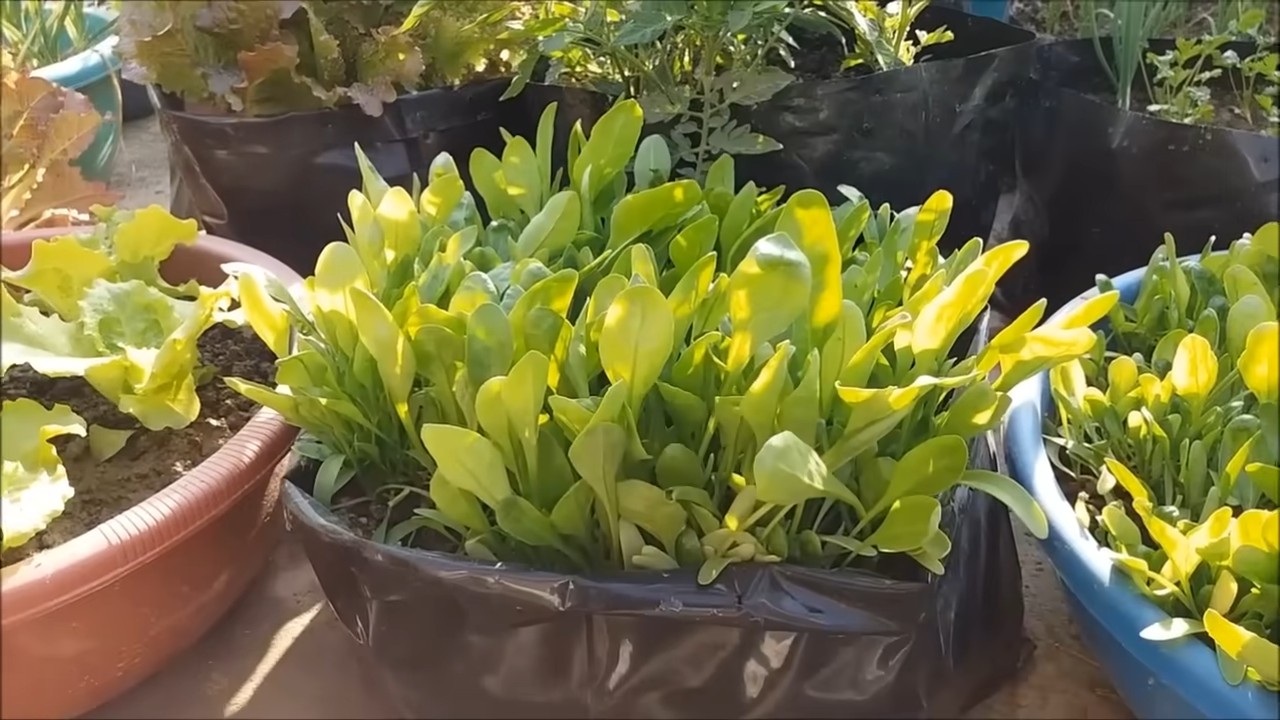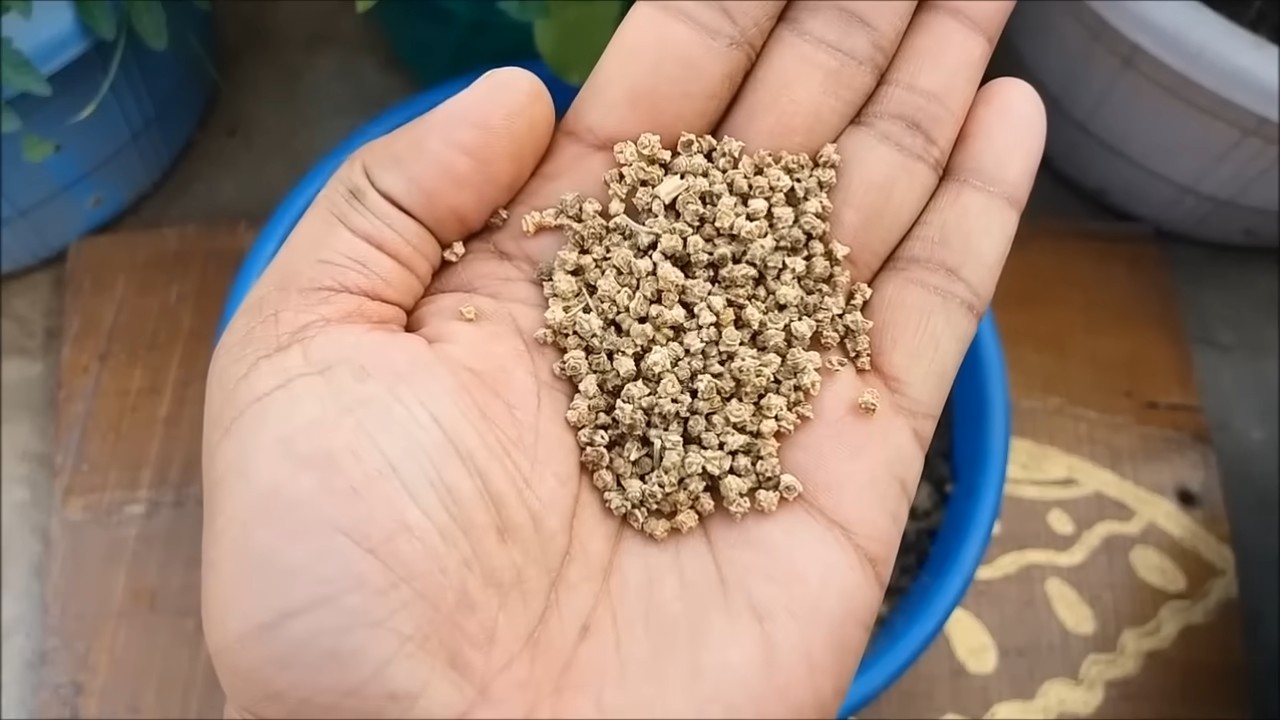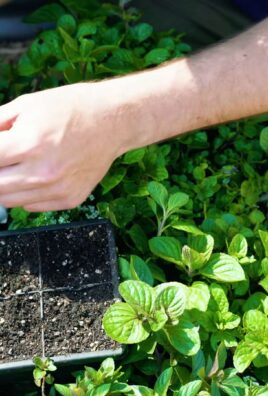Grow spinach at home? Absolutely! Imagine stepping into your backyard and harvesting fresh, vibrant spinach leaves for your salad, smoothie, or favorite dish. No more trips to the grocery store, no more wilted greens – just pure, homegrown goodness. For centuries, spinach has been a staple in diets around the world, celebrated for its nutritional power and versatility. From ancient Persia, where it’s believed to have originated, to Popeye’s iconic endorsement, spinach has a rich history and a well-deserved reputation as a superfood.
But let’s be honest, sometimes gardening feels intimidating, especially when you’re aiming for a bountiful harvest. That’s where these DIY tricks and hacks come in! I’m here to share some simple, effective methods to help you grow spinach at home successfully, even if you’re a complete beginner. We’ll cover everything from choosing the right variety and preparing your soil to protecting your precious plants from pests and diseases. So, ditch the store-bought spinach and get ready to enjoy the satisfaction of growing your own delicious, healthy greens. Let’s get started!

Growing Spinach at Home: A Beginner’s Guide
Okay, so you want to grow your own spinach? Awesome! It’s easier than you think, and nothing beats the taste of fresh, homegrown greens. I’ve been growing spinach for a few years now, and I’m going to share all my secrets (well, most of them!) to help you get started.
Choosing Your Spinach Variety
First things first, let’s talk spinach varieties. There are a bunch out there, but some are better suited for home gardens than others. Here are a few of my favorites:
* Bloomsdale Long Standing: This is a classic for a reason. It’s heat-tolerant, which is great if you live in a warmer climate, and it’s slow to bolt (meaning it won’t go to seed quickly).
* Giant Nobel: As the name suggests, this variety produces large, thick leaves. It’s also known for its mild flavor.
* Tyee: This is a hybrid variety that’s resistant to several common spinach diseases. It’s a good choice if you’ve had problems with spinach in the past.
* Winter Bloomsdale: Perfect for fall planting, this variety is extremely cold-hardy and can withstand freezing temperatures.
Preparing Your Spinach Bed
Spinach loves well-drained soil that’s rich in organic matter. Here’s how I get my garden bed ready:
* Sunlight: Spinach needs at least 3-4 hours of sunlight per day. Morning sun is ideal, as it helps to dry the leaves and prevent fungal diseases.
* Soil: Test your soil’s pH. Spinach prefers a pH between 6.5 and 7.0. You can amend your soil with lime to raise the pH or sulfur to lower it. I usually just buy a soil testing kit from my local garden center.
* Amendments: Mix in plenty of compost or well-rotted manure. This will improve drainage, add nutrients, and help retain moisture. I usually add about 2-3 inches of compost to my spinach bed.
* Drainage: Make sure your soil drains well. Spinach doesn’t like to sit in soggy soil. If your soil is heavy clay, consider adding some sand or perlite to improve drainage.
Planting Your Spinach Seeds
Now for the fun part – planting! Spinach can be planted in early spring or early fall. I prefer fall planting because the cooler temperatures help prevent bolting.
1. Timing: For a spring crop, plant your seeds 4-6 weeks before the last expected frost. For a fall crop, plant your seeds 6-8 weeks before the first expected frost.
2. Sowing: Sow your seeds about ½ inch deep and 1 inch apart. I like to use a dibber (a small tool for making holes in the soil), but you can also use your finger.
3. Spacing: Space your rows about 12 inches apart. This will give your spinach plants enough room to grow.
4. Watering: Gently water the soil after planting. Keep the soil moist but not soggy until the seeds germinate.
5. Germination: Spinach seeds typically germinate in 5-10 days.
Caring for Your Spinach Plants
Once your spinach plants have sprouted, it’s important to provide them with proper care.
* Watering: Water your spinach plants regularly, especially during dry spells. Aim for about 1 inch of water per week. I usually water deeply once or twice a week, rather than shallowly every day.
* Fertilizing: Spinach is a heavy feeder, so it’s important to fertilize it regularly. I like to use a liquid fertilizer that’s high in nitrogen. You can also side-dress your plants with compost or well-rotted manure.
* Weeding: Keep your spinach bed free of weeds. Weeds compete with spinach for nutrients and water. I usually hand-weed my spinach bed every week or two.
* Thinning: Once your spinach plants are a few inches tall, thin them to about 4-6 inches apart. This will give them more room to grow and prevent overcrowding. You can eat the thinnings!
* Pest Control: Keep an eye out for pests, such as aphids, flea beetles, and leaf miners. I usually try to control pests with organic methods, such as insecticidal soap or neem oil.
* Bolting Prevention: Spinach is prone to bolting (going to seed) in hot weather. To prevent bolting, try to plant your spinach in a shady location or provide it with shade during the hottest part of the day. You can also choose heat-tolerant varieties.
Harvesting Your Spinach
The best part! You can start harvesting your spinach leaves when they are about 4-6 inches long.
1. Timing: Harvest your spinach in the morning, when the leaves are crisp and cool.
2. Method: Cut the outer leaves with a sharp knife or scissors, leaving the inner leaves to continue growing. You can also harvest the entire plant at once.
3. Storage: Store your spinach in the refrigerator for up to a week. Wash it thoroughly before using. I like to wrap my spinach in a damp paper towel and store it in a plastic bag.
Dealing with Common Spinach Problems
Even with the best care, you might encounter some problems when growing spinach. Here are a few common issues and how to deal with them:
* Bolting: As mentioned earlier, bolting is a common problem with spinach. To prevent bolting, plant your spinach in a shady location, choose heat-tolerant varieties, and water it regularly.
* Downy Mildew: This fungal disease can cause yellow spots on the leaves. To prevent downy mildew, plant your spinach in well-drained soil, provide good air circulation, and avoid overhead watering. If you see signs of downy mildew, remove the affected leaves and spray your plants with a fungicide.
* Aphids: These small, sap-sucking insects can weaken your spinach plants. To control aphids, spray your plants with insecticidal soap or neem oil. You can also attract beneficial insects, such as ladybugs, to your garden.
* Flea Beetles: These small, jumping beetles can chew holes in the leaves of your spinach plants. To control flea beetles, cover your plants with row covers or spray them with insecticidal soap or neem oil.
* Leaf Miners: These insects tunnel through the leaves of your spinach plants, leaving behind unsightly trails. To control leaf miners, remove the affected leaves and spray your plants with neem oil.
Extending Your Spinach Harvest
Want to enjoy fresh spinach for as long as possible? Here are a few tips for extending your harvest:
* Succession Planting: Plant a new batch of spinach seeds every 2-3 weeks. This will ensure a continuous supply of fresh spinach.
* Fall Planting: As mentioned earlier, fall planting is a great way to extend your spinach harvest. Spinach can tolerate light frosts and even some snow.
* Cold Frames: If you live in a cold climate, you can use a cold frame to protect your spinach plants from the elements. A cold frame is a simple structure that provides a sheltered environment for your plants.
* Row Covers: Row covers are another way to protect your spinach plants from the cold. They are lightweight fabric covers that you can place over your plants.
Spinach in Containers
Don’t have a garden? No problem! You can also grow spinach in containers.
1. Container Size: Choose a container that is at least 6 inches deep and 12 inches wide.
2. Potting Mix: Use a high-quality potting mix that drains well.
3. Planting: Plant your spinach seeds as described above.
4. Location: Place your container in a sunny location.
5. Watering: Water your spinach plants regularly, especially during dry spells.
6. Fertilizing: Fertilize your spinach plants every 2-3 weeks with a liquid fertilizer.
My Favorite Spinach Recipes
Okay, now that you’ve grown all this amazing spinach, what are you going to do with it? Here are a few of my favorite recipes:
* Spinach Salad: A classic! Toss fresh spinach leaves with your favorite toppings, such as berries, nuts, cheese, and a vinaigrette dressing.
* Spinach and Artichoke Dip: This is always a crowd-pleaser. Combine spinach, artichoke hearts, cream cheese, mayonnaise, and Parmesan cheese, then bake until bubbly.
* Spinach Smoothie: A healthy and delicious way to start your day. Blend spinach with fruit, yogurt, and juice.
* Sautéed Spinach: A simple and flavorful side dish. Sauté spinach with garlic, olive oil, and a pinch of salt.
* Spinach and Feta Pie (Spanakopita): A

Conclusion
So, there you have it! Growing spinach at home is not only achievable, but it’s also incredibly rewarding. Forget those limp, pre-packaged greens from the supermarket. Imagine stepping into your garden or onto your balcony and harvesting vibrant, crisp spinach leaves whenever you need them. The difference in taste and texture is simply undeniable. This DIY trick transforms your kitchen into a source of fresh, nutritious goodness.
But why is this a must-try? Beyond the superior flavor, growing your own spinach puts you in control. You know exactly what goes into your food – no pesticides, no hidden chemicals, just pure, unadulterated spinach. It’s a healthier, more sustainable, and frankly, more satisfying way to enjoy this leafy green. Plus, it’s a fantastic way to connect with nature, even if you only have a small space.
Think about the possibilities! You can experiment with different varieties of spinach, from the smooth-leaved types perfect for salads to the savoyed varieties that hold up beautifully in cooked dishes. Try adding companion plants like marigolds to deter pests naturally, or interplant your spinach with radishes for a mutually beneficial relationship. You can even extend your growing season by using cold frames or row covers to protect your plants from frost.
And the best part? You don’t need a green thumb to succeed. With a little planning and attention, anyone can master the art of growing spinach at home. It’s a simple, straightforward process that yields incredible results.
We’ve covered the basics, but the real magic happens when you put these tips into practice. Don’t be afraid to experiment, adapt, and find what works best for your specific environment. Whether you’re a seasoned gardener or a complete beginner, we encourage you to give this DIY trick a try.
We’re confident that you’ll be amazed by the freshness and flavor of homegrown spinach. So, grab your seeds, prepare your soil, and get ready to enjoy a bounty of delicious, nutritious greens.
And most importantly, we want to hear about your experience! Share your tips, tricks, and triumphs in the comments below. Let us know what varieties you’re growing, what challenges you’ve faced, and what you’ve learned along the way. Together, we can create a community of spinach-growing enthusiasts and inspire others to embrace the joys of homegrown food. So, what are you waiting for? Start growing spinach at home today!
Frequently Asked Questions (FAQs)
What is the best time of year to plant spinach?
Spinach is a cool-season crop, meaning it thrives in cooler temperatures. The best time to plant spinach is typically in early spring or early fall. For a spring crop, sow seeds as soon as the ground can be worked, usually 4-6 weeks before the last expected frost. For a fall crop, plant seeds 6-8 weeks before the first expected frost. In warmer climates, you may be able to grow spinach throughout the winter. Avoid planting during the heat of summer, as high temperatures can cause spinach to bolt (go to seed) prematurely, resulting in bitter-tasting leaves.
What kind of soil does spinach need?
Spinach prefers well-drained soil that is rich in organic matter. The ideal soil pH is between 6.5 and 7.0. Before planting, amend your soil with compost or well-rotted manure to improve its fertility and drainage. If your soil is heavy clay, consider adding sand or other amendments to improve drainage. Spinach also benefits from a consistent supply of nutrients, so consider using a slow-release fertilizer or side-dressing with compost tea during the growing season.
How much sunlight does spinach need?
Spinach needs at least 4-6 hours of sunlight per day to grow well. However, it can tolerate some shade, especially during the hottest part of the day. In warmer climates, providing some afternoon shade can help prevent bolting. If you’re growing spinach indoors, use grow lights to supplement natural sunlight and ensure that your plants receive adequate light.
How often should I water spinach?
Spinach needs consistent moisture to thrive. Water regularly, especially during dry periods, to keep the soil consistently moist but not waterlogged. Avoid overhead watering, as this can increase the risk of fungal diseases. Instead, water at the base of the plants or use a soaker hose. Mulching around your spinach plants can also help retain moisture and suppress weeds.
What are some common pests and diseases that affect spinach?
Spinach is susceptible to several pests and diseases, including aphids, leaf miners, flea beetles, and downy mildew. To prevent pest and disease problems, practice good garden hygiene, such as removing weeds and debris from around your plants. Inspect your plants regularly for signs of pests or diseases and take action promptly. You can use insecticidal soap or neem oil to control aphids and other pests. For downy mildew, choose disease-resistant varieties and ensure good air circulation around your plants.
How do I harvest spinach?
You can begin harvesting spinach leaves as soon as they are large enough to eat, typically when they are about 4-6 inches long. Harvest the outer leaves first, leaving the inner leaves to continue growing. You can either cut the leaves with scissors or gently snap them off at the base of the plant. Avoid harvesting more than one-third of the plant at a time, as this can stress the plant and reduce its yield.
How do I prevent spinach from bolting?
Bolting is a common problem with spinach, especially during hot weather. To prevent bolting, choose bolt-resistant varieties, plant spinach in a shady location, and water regularly to keep the soil cool and moist. You can also use shade cloth to protect your plants from the sun. If your spinach does start to bolt, harvest the leaves immediately, as they will become bitter-tasting.
Can I grow spinach in containers?
Yes, spinach grows well in containers. Choose a container that is at least 6 inches deep and has drainage holes. Use a high-quality potting mix and water regularly. Container-grown spinach may need to be fertilized more frequently than spinach grown in the ground. Place your container in a location that receives at least 4-6 hours of sunlight per day.
How do I store harvested spinach?
To store harvested spinach, wash the leaves thoroughly and pat them dry. Store the spinach in a plastic bag or container in the refrigerator. Spinach is best used within a few days of harvesting. You can also freeze spinach for longer storage. To freeze spinach, blanch the leaves in boiling water for 2 minutes, then plunge them into ice water to stop the cooking process. Drain the spinach well and pack it into freezer bags or containers.
What are some ways to use homegrown spinach?
Homegrown spinach can be used in a variety of dishes. It’s delicious in salads, smoothies, soups, and stir-fries. You can also sauté it with garlic and olive oil, add it to omelets or quiches, or use it as a filling for ravioli or lasagna. The possibilities are endless! Enjoy the fresh, vibrant flavor of your homegrown spinach in all your favorite recipes.




Leave a Comment